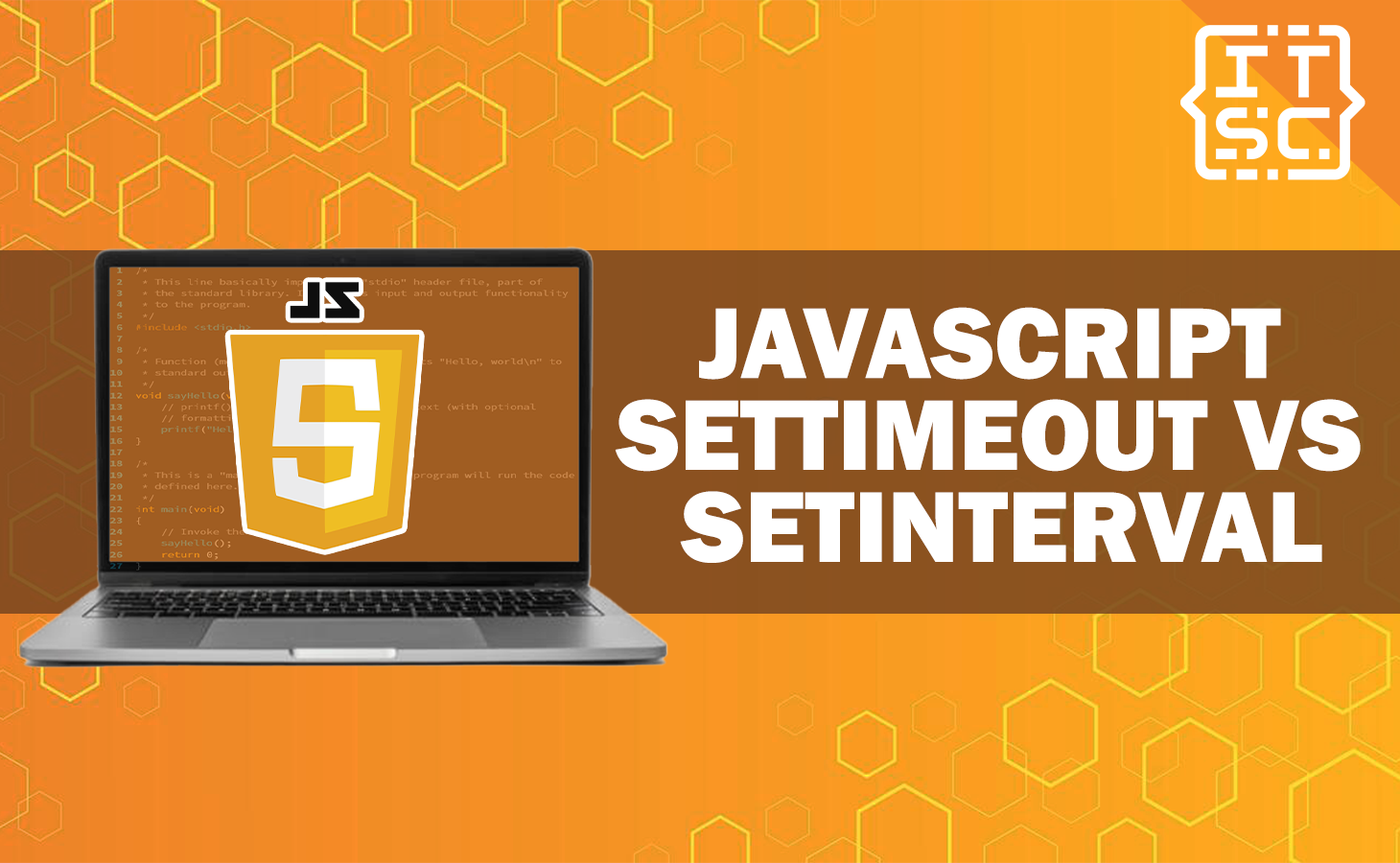Do you want to know the difference between JavaScript setTimeout vs setInterval method? Read on!
This comprehensive guide explains the setTimeout and setInterval methods in JavaScript. It covers their syntax, parameters, return values, and differences.
Both methods return an ID that can be used to cancel them. We will include examples to illustrate their usage and how to cancel them.
What is setTimeout method?
The setTimeout method in JavaScript is a built-in function that schedules a script to be run after a specified amount of time (in milliseconds).
This method only executes the script once. If you need to repeat the execution, you would need to call setTimeout again within the function you’re executing.
Here’s the syntax for setTimeout:
setTimeout(function, delay, arg1, arg2, …) ✅Parameter
function (Required)The function that will be executed.
delay (Required)The delay before execution, in milliseconds.
arg1, arg2, … (Optional)Additional parameters to pass to the function.
Return value
The setTimeout method returns a positive integer value which represents the ID value of the timer that is set.
This value can be used as the parameter to the clearTimeout() method to cancel the timer and prevent the function from executing.
Now, that we fully understand the setTimeout method. Let’s proceed in understanding setInterval() method.
What is setInterval in JavaScript?
The setInterval() is a method in JavaScript that allows you to repeatedly execute a function or a block of code at a specified time interval.
This method returns an ID that can be used to stop the interval using the clearInterval() method.
The first argument of setInterval() is the function or code to be executed, and the second argument is the time interval in milliseconds between each execution.
The interval will continue until clearInterval() is called or the window is closed.
Syntax
Here’s the syntax for setInterval:
setInterval(function, delay milliseconds, [arg1, arg2, ...]); ✅Parameter
function (Required)The function to be executed every delay milliseconds.
milliseconds (Required)The time, in milliseconds (thousandths of a second), the timer should delay in between executions of the specified function or code.
arg1, arg2, …(Optional)Additional parameters to pass to the function specified by callback.
Return value
The setInterval() method returns an interval ID which uniquely identifies the interval, so you can remove it later by calling clearInterval() and passing it the ID value returned by setInterval().
What is the Difference between JavaScript setTimeout vs setInterval Method?
The setTimeout and setInterval methods in JavaScript are both used to schedule tasks, but they work in slightly different ways:
setTimeout(function, delay)
This method executes the provided function once after the specified delay (in milliseconds). It’s like setting an alarm clock: it rings once, then stops.
setInterval(function, delay)
This method executes the provided function repeatedly, with the specified delay between each call. It’s like setting a timer that goes off every so often until you stop it.
Here’s an example to illustration the difference:
// Using setTimeout:
let timeoutId = setTimeout(() => {
console.log("This message will appear once after 1 second.");
}, 1000);
// Using setInterval:
let intervalId = setInterval(() => {
console.log("This message will appear every second.");
}, 1000);
// After 5 seconds, stop the interval
setTimeout(() => {
clearInterval(intervalId);
}, 5000);In this example, the message from setTimeout will appear once after 1 second.
The message from setInterval will appear every second, but we stop it after 5 seconds using clearInterval. So, the message from setInterval will appear 5 times in total.
Remember, both setTimeout and setInterval return an ID that can be used to cancel them with clearTimeout(id) and clearInterval(id) respectively.
Here’s an example:
let timeoutId = setTimeout(function() { console.log("Hi, Welcome to Itsourcecode!"); }, 1000);
clearTimeout(timeoutId); // This will cancel the timeout before it can execute.In this case, “Hi, Welcome to Itsourcecode!” will not be printed to the console because we’ve cancelled the timeout before it could execute.
Conclusion
In conclusion, this article has thoroughly discussed the setTimeout and setInterval methods in JavaScript, explaining their syntax, parameters, return values, and practical applications for task scheduling.
The setTimeout method schedules a script to run once after a specified delay, while setInterval allows a function to execute repeatedly at a specified interval.
Both methods also provide a unique ID for task cancellation. With the help of clear examples, the article has effectively demonstrated how these methods work and highlighted their distinctions.
We hope this article has provided you with enough information to understand the JavaScript setTimeout vs setInterval.
If you want to explore more JavaScript topics, check out the following articles:
Thank you for reading Itsourcecoders 😊.

